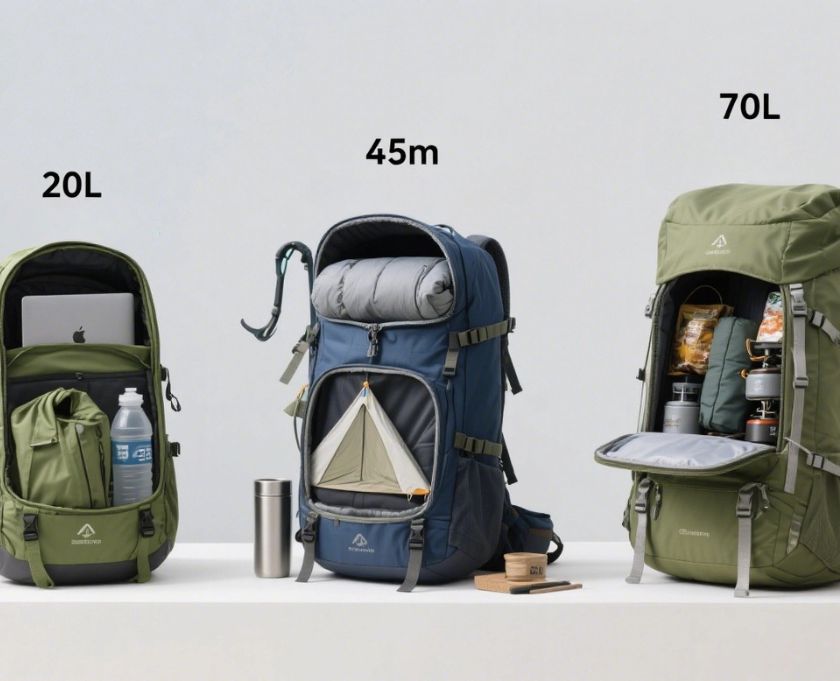Beautiful Plants For Your Interior

When it comes to hiking, choosing the right backpack capacity can make or break your trip. This outdoor hiking backpack capacity guide will help you decide which size fits your adventure—whether it’s a short day hike or a two-week expedition.
Understanding Backpack Capacity (Liters Explained)
How Backpack Volume Is Measured
Capacity is usually measured in liters, referring to the volume inside the backpack’s compartments.
Why Capacity Affects Comfort and Utility
A pack too small won’t fit your gear; too large becomes heavy and uncomfortable.
Backpack Capacity Categories
Small Daypacks (15–30L)
- Perfect for water, snacks, and light gear.
- Best for day hikes or city use.
Medium Backpacks (30–50L)
- Fits clothing, food, and camping essentials.
- Ideal for weekend trips.
Large Backpacks (50–70L)
- Enough for tents, sleeping bags, and multiple outfits.
- Good for multi-day treks.
Expedition Packs (70L and above)
- For extended trips and heavy gear.
- Common in mountaineering and long expeditions.
Choosing the Right Capacity for Different Trips
Day Hikes
Choose a 20–30L pack for essentials.
Weekend Getaways (1–3 Nights)
A 35–50L pack strikes the right balance.
Multi-Day Treks (3–7 Nights)
Opt for 50–65L for tents, sleeping bags, and cooking gear.
Expeditions (Over 7 Nights)
70L+ is necessary for survival gear and extra supplies.
Factors That Influence Backpack Capacity Choice
Climate and Season
Colder weather requires bulkier gear, meaning larger capacity.
Type of Gear and Personal Packing Style
Minimalists can manage with less; comfort-seekers need more space.
Gender and Body Frame Considerations
Some packs are designed with specific torso lengths for comfort.
Top 8 Recommended Hiking Backpacks by Capacity in 2025
- Osprey Talon 22 (Daypack) — Lightweight and breathable
- Deuter Futura 34 (Medium) — Great ventilation system
- Gregory Zulu 40 (Medium) — Balanced comfort and storage
- The North Face Terra 55 (Large) — Affordable and reliable
- Arc’teryx Bora AR 63 (Large) — Premium durability
- Thule Landmark 60 (Large) — Travel-ready hybrid design
- Osprey Atmos AG 65 (Expedition) — Anti-gravity suspension system
- Deuter Aircontact Lite 70+10 (Expedition) — Expandable with extra storage
Comparison Table: Backpack Capacities and Use Cases
| Capacity Range | Best Use Case | Typical Gear Included |
|---|---|---|
| 15–30L | Day hikes, daily commuting | Water, snacks, light jacket, camera |
| 30–50L | Weekend trips (1–3 nights) | Clothing, food, compact sleeping gear |
| 50–70L | Multi-day treks (3–7 nights) | Tent, sleeping bag, cooking equipment |
| 70L+ | Expeditions (7+ nights) | Extra food, gear, cold-weather clothing |
Common Mistakes When Choosing Backpack Capacity
- Buying too large, leading to overpacking
- Ignoring torso length and weight distribution
- Forgetting seasonal gear requirements
- Underestimating food and water storage needs
Tips for Packing Efficiently
- Use compression sacks to save space
- Pack heavy items close to your back for balance
- Keep frequently used items in outer pockets
- Avoid unnecessary duplicates of gear
Frequently Asked Questions (FAQs)
Q1: What size backpack is best for a weekend hike?
A: A 35–50L pack is perfect.
Q2: Can I use a 70L backpack for a day hike?
A: Technically yes, but it’s overkill and uncomfortable.
Q3: How do I know my torso size for a backpack?
A: Measure from the base of your neck to your hip bones.
Q4: Are larger backpacks always better for comfort?
A: No, oversized packs can strain your back.
Q5: Can one backpack serve all purposes?
A: A 40–50L pack can cover most short trips and commutes.
Conclusion: Find Your Perfect Backpack Size
This outdoor hiking backpack capacity guide proves that the right size depends on trip length, climate, and packing style. Choose wisely, and your backpack will enhance—not hinder—your adventure.